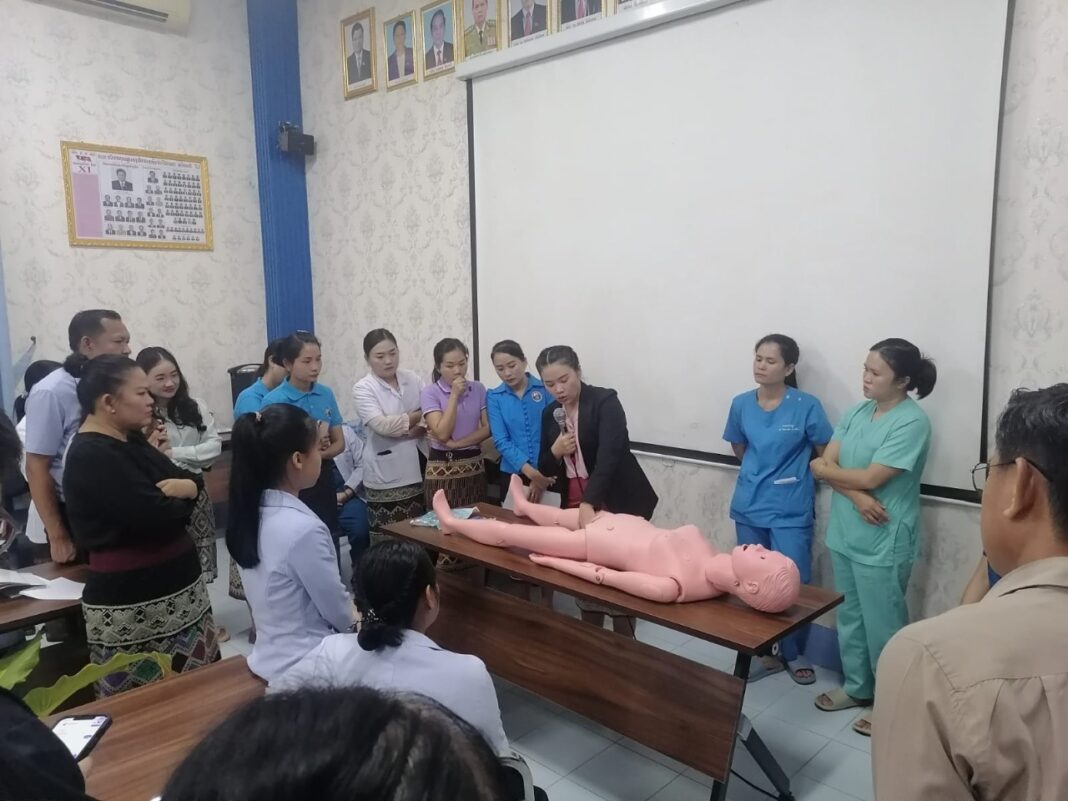A Silent Crisis
Gender-based violence (GBV) is one of the most widespread human rights violations worldwide. In Laos, the statistics mirror global trends—about one in three women experience sexual, physical, or emotional violence. Yet, only one in ten seek help from authorities. A culture of silence, deeply ingrained in societal norms and patriarchal values, allows the cycle to continue.
“Many survivors believe violence is just a part of life,” said Rattana Sioutoum, a technical officer at the Counseling and Protection Center for Women and Children in Vientiane. “Changing this mindset is a challenge, but it’s one we must take on.”
Rattana remembers one case vividly. “She was just eight years old when she arrived. Her story is a clear reminder that gender-based violence knows no boundaries—even within the family.”
Noi (name changed for privacy) was one of many survivors who found refuge at the center. Over nearly two years, she slowly recovered her health and confidence. With support, she returned to school and eventually graduated, a proud moment for everyone who helped her along the way.
A Safe Haven for Survivors
Since its establishment in 2006 under the Lao Women’s Union, the UNFPA-supported Counseling and Protection Center for Women and Children has provided a sanctuary for survivors of gender-based violence. No survivor is turned away when seeking help.
The center offers social, mental health, and legal services to women and children in need. In the first nine months of 2024 alone, it provided life-changing support to more than 300 survivors, including 91 under the age of 18. Many were referred by hospitals, the police, or through hotlines and social media.
A Coordinated Response
To break down barriers to support, UNFPA has partnered with the Lao Women’s Union to build a nationwide network of shelters and services. With UNFPA’s backing, six shelters have been established in Vientiane Capital, Bokeo, Bolikhamxay, Champasack, Savannakhet, and Attapeu, offering survivors a safe space and comprehensive care.
Service delivery has improved significantly since 2022. The Lao Women’s Union, working alongside the National Commission for the Advancement of Women, Mothers, and Children, developed and adopted standard operating procedures (SOPs) for health, social, and coordination services. These ensure survivors receive consistent, high-quality care. Combined with the Justice SOPs developed by UNDP, these guidelines promote a survivor-centered approach in hospitals, police stations, and social services—emphasizing compassion, professionalism, and adherence to international standards.
This progress has been made possible with the support of key donors, including the Government of Japan, the Korea International Cooperation Agency (KOICA), the Government of Australia through the Department of Foreign Affairs and Trade (DFAT), and the United Kingdom (UK). Their contributions have helped expand shelter networks and implement SOPs, ensuring survivors in multiple provinces receive the care and support they need.
The Counseling and Protection Center for Women and Children is a testament to the success of this coordinated effort. Survivors are guided through a rehabilitation plan that includes health check-ups, family outreach, mental health counseling, and legal aid. Since 2015, the center has also partnered with Mother and Child Hospital to provide comprehensive medical and psychological support, ensuring survivors face no additional barriers on their path to recovery.
“These SOPs are more than just guidelines—they are a lifeline for victims and the staff who support them,” said Dr. Sengchanh Sivilay, head of Gynecology at Mother and Child Hospital. With UNFPA’s support, she has trained over 60 nurses in handling GBV cases effectively. This training has expanded to provinces such as Attapeu, Bokeo, Bolikhamxay, and Savannakhet, strengthening survivor care across the country.
Looking to the Future
UNFPA is working with the Lao government to tackle the root causes of GBV by empowering men and boys to become advocates for change. Efforts include using data and program evidence to develop new National Action Plans for the Elimination of Violence Against Women and Gender Equality for 2026-2030, aligning with Sustainable Development Goal 5.
Ending GBV is not just about providing support to survivors—it’s about prevention, education, and empowerment. It’s about creating a society where violence is neither tolerated nor ignored and where every individual, from community leaders to family members, plays a role in breaking the cycle.
“Ending gender-based violence starts with awareness and accountability,” said Rattana. “By working together, we can build a future where every woman and child lives free from violence and fear.”
To make this vision a reality, additional support is urgently needed. Expanding the shelter network to ensure every province has at least one safe space for survivors is critical. Strengthening SOP implementation, increasing social behavior change initiatives, and engaging men, boys, and communities in addressing GBV’s root causes are all essential steps forward. With continued investment and collaboration, Laos can ensure that no survivor is left behind—and that prevention efforts keep gaining momentum.



